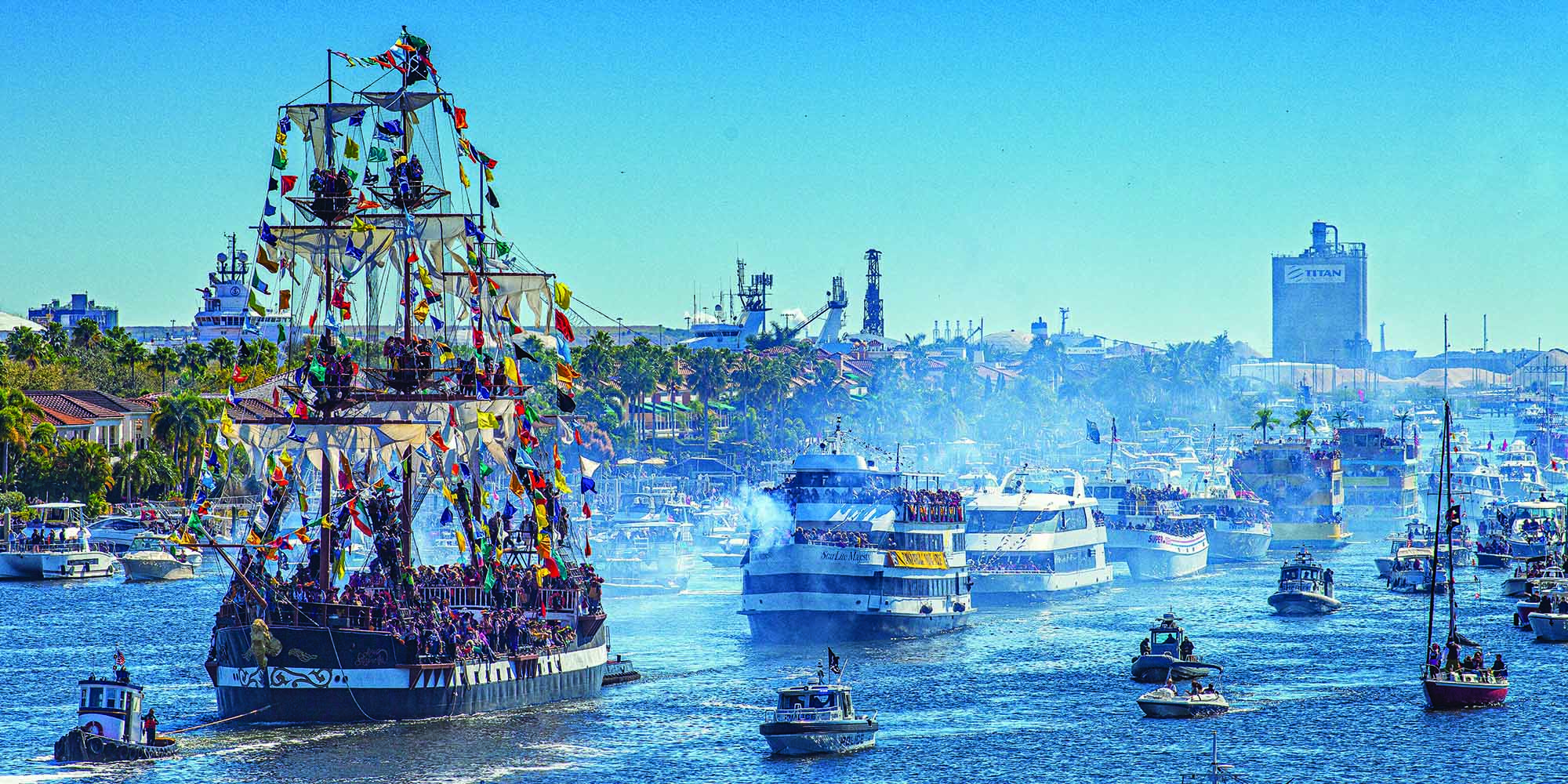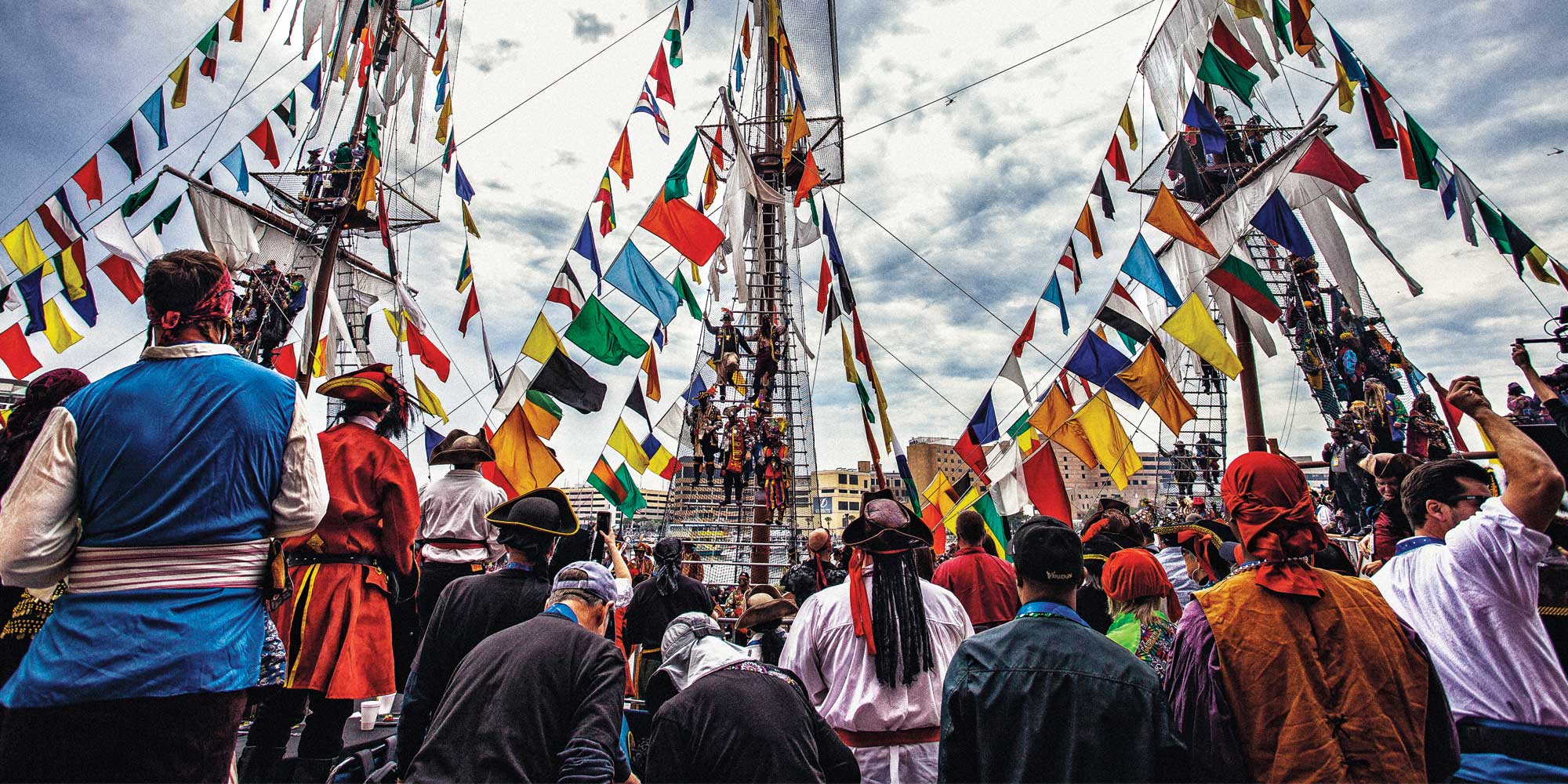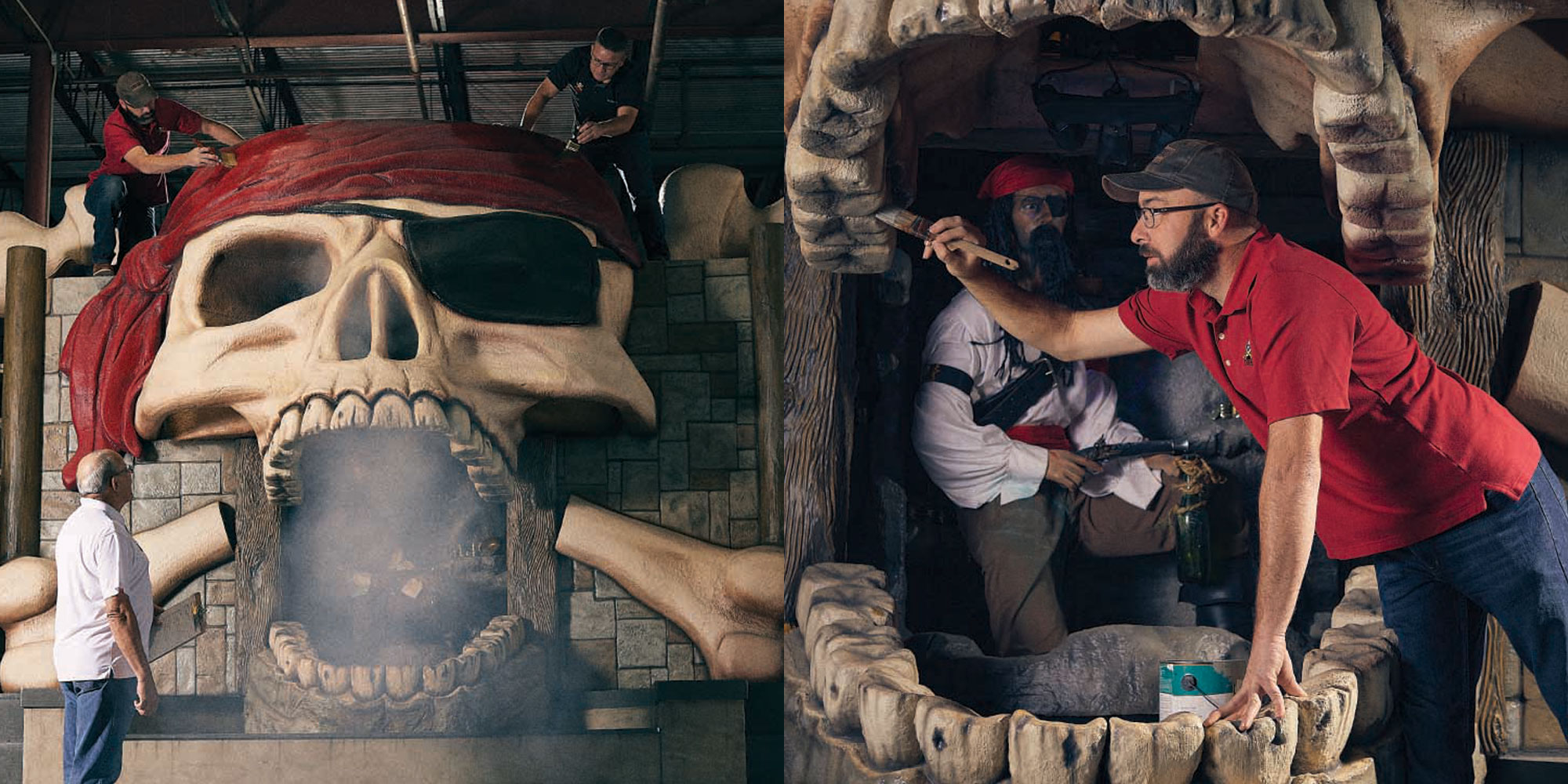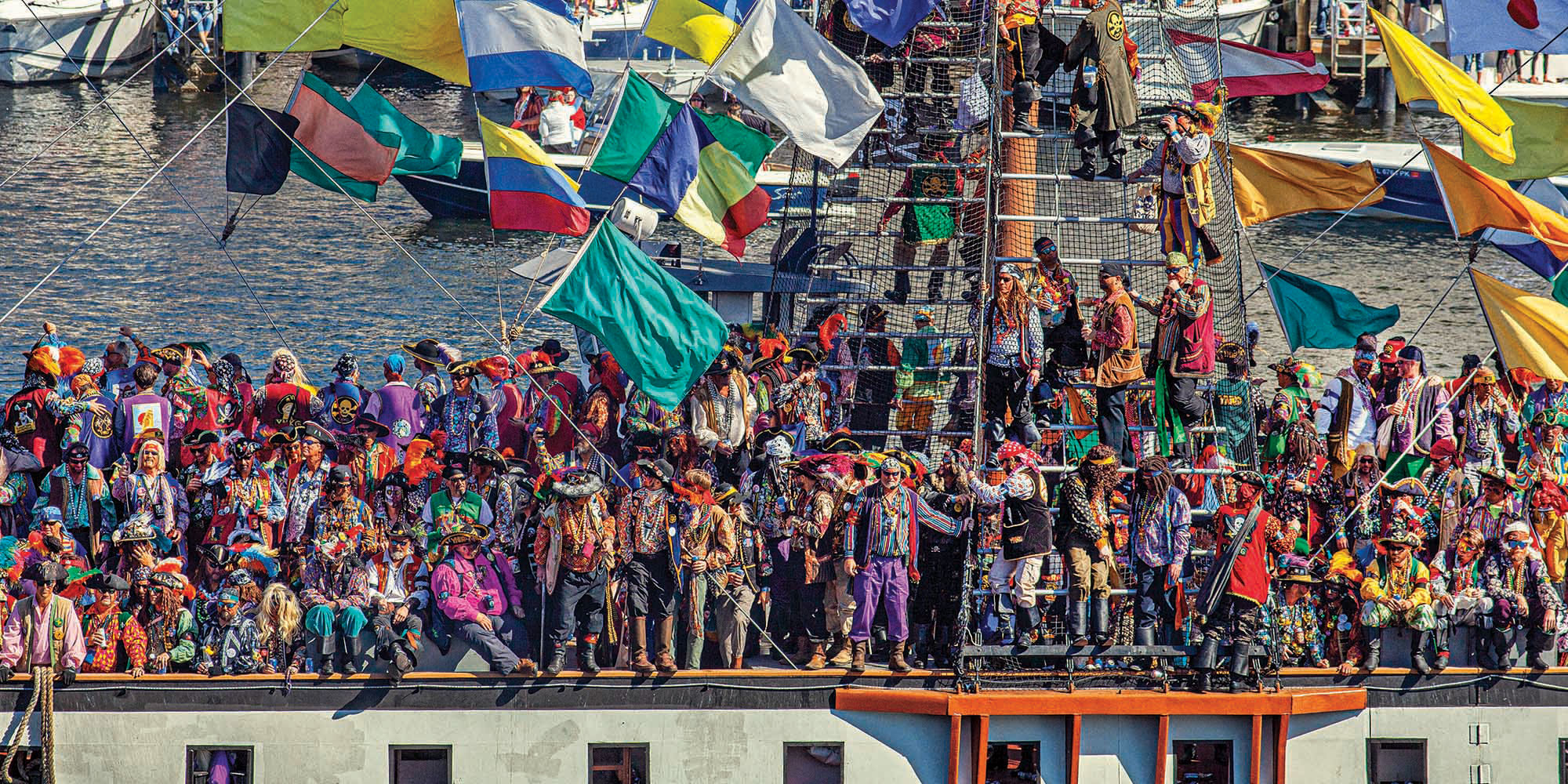It takes a village to put on Tampa’s signature event. After all, Gasparilla features the largest boat parade and third largest annual parade in the U.S. (after Macy’s and the Rose Bowl), attracting half a million attendees and pumping over $40 million into the economy per year. Here’s a behind-the-scenes look at what goes into bringing this 106-year-old Tampa tradition to life.
Thousands of people help make it happen, and it all starts a year in advance. The day after one Gasparilla ends, planning for the next one begins. Ye Mystic Krewe of Gasparilla (YMKG), the organization inspired by the legend of pirate Jose Gaspar, heads up the plans, which include a Children’s Parade (Sat., Jan. 22), Pirate Invasion and Parade of Pirates (Sat., Jan. 29).
“Gasparilla is pure Tampa: historic but ever-changing, sometimes crazy and always fun,” Mayor Jane Castor says.
The Children’s Parade is the largest in the nation, attracting a quarter million attendees per year to the alcohol-free event. A week later, YMKG members set sail from Ballast Point for the Pirate Invasion on the Jose Gasparilla II; about 750 boats accompany the ship on the 90-minute journey to the Tampa Convention Center, where the pirates have a key ceremony with the mayor. Shortly after, the Parade of Pirates begins, traversing Bayshore Boulevard to Downtown Tampa, with about 70 krewes participating.

At Gasparilla’s helm is YMKG’s captain and executive director, supported by a board of directors, executive officer and six staff members.
“Gasparilla celebrates the rich diversity of culture that we have here in Tampa,” Lackman says. “It’s really about the community and having half a million people out there having a great pirate time. It’s the most fun you can have playing a pirate.”
The krewe works with several key agencies to ensure a safe, productive event, including Tampa Police Department, Tampa Fire Rescue, Tampa Special Events, Hillsborough County Sheriff’s Office, U.S. Coast Guard, and Florida Fish and Wildlife Conservation Commission.
Meetings are held quarterly starting in the summer and then increase in frequency to monthly, weekly and even daily as Gasparilla nears. Safety is a top priority for the 11,000 parade participants. Seven security personnel surround each parade unit (117 this year) to ensure a clear path. A fence runs the entire length of the 5.4-mile route on each side and takes about a month to set up, along with bleachers. And safety measures aren’t just taken for people.
“Because we want to be good stewards of the Bay, we have a contracted marine engineering company that puts on a manatee protected species watch,” Lackman says.

A ZooTampa marine scientist keeps a sharp lookout from a helicopter, and thankfully, there has never been an issue. YMKG also coordinates with a plethora of sponsors and vendors, as well as eight beverage stations along the adult parade route that bring in about $115,000 for charity.
A unique challenge each year is adjusting the parade route. New buildings and street lights may pop up and must be evaluated to see if floats can navigate around them or if the course needs to be tweaked.
With so many attendees eating, drinking and throwing beads, Lackman is always amazed at how pristine the parade route looks the next day, commending Tampa’s Solid Waste Department.
A lengthy list of logistics each year, it’s incredible how thousands of people come together to make Gasparilla such a success, on its 106th year and counting.

A Family of Float Builders
Colorful, creative masterpieces make their way down Bayshore Boulevard for the event of the year — Gasparilla’s Parade of Pirates.
Several of the handmade floats stealing the spotlight are the pride of a special father-son team on Ye Mystic Krewe of Gasparilla’s staff: Tampa natives Hewett, Christopher and Timothy Rivers. Together, they’ve built five floats and revamped or repaired over a dozen others. Hewett works wonders with the woodwork, while son Chris masters the mechanics and son Tim delights in the design.
“It’s family,” Tim says. “We respect each other.”
Their creations include a pirate cove with a jail, a pirate castle parapet, a happy pirate, a kraken and perhaps the crowd favorite, the skull and crossbones, complete with a smoke feature.
Building a new float is no small task. It starts with concepting on the computer and approval by the krewe. Then, the Riverses bring it to life on top of a hay wagon. They use a variety of materials, mostly wood and fiberglass, sometimes foam and plaster. They even make their own fiberglass plugs and hand pull the molds. The laborious process takes an average of eight to nine months per float.
“We spend a lot of hours working side by side,” Chris says. “We enjoy what we do.”
They describe it like a puzzle. Not only are they making something aesthetically stunning; they also are accommodating bathrooms and structural support for about 30 to 70 members. The entire float may weigh several tons. Balance is key, and of course, safety is a priority. Handrails are installed and everything gets double checked — hitches, tires, brakes and the like.
Hewett started working for the krewe part time in the late 1980s and became its full time warehouse supervisor in 1993. A former homebuilder, his skills easily translated to floats. Chris, a former automotive and marine mechanic, started part time with the krewe in 2003 and went full time in 2006. Tim, a natural artist, became part time with the krewe in 2008 and full time in 2011.
“It runs in the family,” Hewett says. “There’s a special bond when you work with your sons.”
We’ve outfitted the floats, now what about Outfitting Pirates & Princesses?



